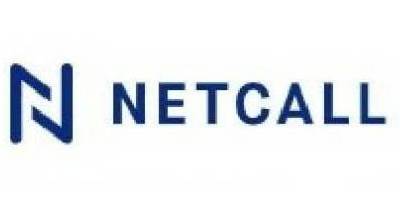Facing the new perfect storm – Stabilising your digital contact centre – Having weathered the disruption of a global pandemic, most organisations are stabilising and operating in the new normal, but are we just in the calm before a new storm? Ken Ume, Product Marketing Manager at Netcall discusses.

Below are some clarifications to the new challenges that are destabilising contact centres and how to tackle them.
A perfect storm looms
The great resignation looms for most UK organisations. Fuelled by the pandemic, people are re-thinking career choices, as better opportunities open up for more fulfilling or better paid roles, or positions which give something back to the community.
Contact centre churn has always been an operational fact, running as high as 25% in the UK, well above the national average of 15%. The pandemic has arguably made things worse. Contact centre agents look for job satisfaction, flexibility and better pay, as always. The truth is, now there are more opportunities and reasons to look elsewhere.
The global pandemic may have prompted a major shift in social and working behaviours. It has accelerated the evolution of contact centres. Greater demand, higher customer expectations, increased complexity have made some traditional contact centre management practices less relevant. It’s also illuminated some disconnects, particularly with tech, process and knowledge management. Some of the issues have been overcome in the last 18 months. As the headlong rush to stay ahead of pandemic-induced demand slows down, we now have to face the hidden accumulated technical and process debt.
The pace of change in customer experience (CX) is continuing to increase. In a recent study conducted by Netcall and Davies, 70% of insurance organisations say that the pace of CX innovation has increased in the last 12 months. And, at the same time, customer patience for any disruption caused by COVID is wearing thin (or has gone altogether). Budgets were flexible in early 2020 to make things work fast, but they are now tapering away.
Often, contact centres are at the heart of all these drivers.
What does good look like?
Before you can rise to the new challenge, you must first re-set the goalposts. Establishing what the ideal contact centre set up would actually look and feel like, as it is likely to be vastly different to what you were aiming for three years ago. Is it still viable to expect a large room full of people with headsets to deal with high call volumes, focused on wrap times and first call resolution? Is it even beneficial?
It’s widely viewed that a distributed workforce is the likely future for all contact centres. For some organisations, even the ‘distributed contact centre’ needs to be reimagined. Effective customer outcomes take priority over internal processes and structures. The disciplines and skill sets typically wrapped around the contact centre are finding new applications, across more relevant knowledge workers with the potential to help customers. All with the ambition of reducing friction in CX.
The challenge is how to ensure you have the discipline, support and training from the traditional environment. Alongside the expertise and experience of customer facing staff, who may be scattered in geographical location and job functions. This makes the new environment look less like a mega contact centre, and more like a flexible CX hub. It will be agile and nimble to leverage the best process, expertise and information to deliver CX changes. It’s more of a collection of skills and tech which can be deployed to effectively respond to customer demand.
It’s more important than ever to integrate people closely with multiple and legacy back office systems, which are often disparate, so they can gather and present whatever is needed, whenever it’s needed.
How do you measure performance?
Some organisations are already realigning with new internal performance metrics. Today’s empowered customers reject old-school CX surveys, interacting in new ways which measurement must tap into. From the new version of Net Promoter, customer effort scores and customer retention rates to harvesting the feedback that frontline employees hear directly from customers. The changes discussed above, along with the shift towards omnichannel, has made many traditional metrics less relevant. AI-related technologies offer better ways to measure, analyse and predict future trends. As such, dashboards and reports need to be redesigned.
Consider for example, first call resolution (FCR) in measuring agent performance. In a single synchronous call-based environment, that metric has significant merit. However, imagine if you’ve designed an environment where you use digital channels and automation, to free agents from operational, routine tasks, like reporting on delivery status. These tasks often distract agents from giving great service to a customer and the repetitive, mundane nature of recording information in different systems leaves a door wide open for human error.
Automating these tasks is a great way to reduce the burden on your teams. It also allows you to pull data from multiple systems and present the information to the agent when they need it. As a side benefit, you will also avoid the time and cost of re-working to correct errors.
A customer might be happy to start an asynchronous conversation in the evening, knowing that they won’t receive an answer for hours. Other queries may be answered in seconds by chatbots. Average handling times (AHT) can struggle to measure the performance around conversations that are part of a longer engagement, across multiple touchpoints. It may ultimately lead to a detailed conversation with an agent, when the matter becomes complex or sensitive. This may be hours or days after the initial engagement. Traditional FCR or AHT metrics may penalise the agent for the long tail to the final call, or the long end call. However, the preceding touchpoints have helped to pare down the final agent interaction to a precise position.
A dashboard or report built around these kinds of metrics, may also risk distancing other stakeholders, because they focus on ‘contact centre’ metrics and reports only.
To achieve the right outcomes and decision-making environment, our metrics, dashboards and reports must focus on efficiency in delivering the right outcomes at the right time, plus the impact of contact centre performance upon the rest of the organisation.
Traditional contact centre reports and metrics still have a place, but they should be combined with other data to show the whole impact of the interaction. The resulting dashboard is then focus on CX delivery. Automation plays a powerful role in pulling disparate data into reports and dashboards that show the whole picture. It’s not easy and it’s unlikely to be delivered in a single step, but the ambition must be to develop a coherent CX-based dashboard of information to build decisions for positive changes.
What does service look like externally?
Ultimately, providing employees with a flexible interface gives them the information they need to satisfy customers, whether they’re working from the office or the kitchen table. The decline of the phone call has been predicted for years. Some had expected COVID to finally send the venerable channel into terminal decline as other channels rose in popularity. Instead, COVID increased demand across all channels, especially phone. Inbound telephony volumes have risen in the last 12 months, according to our study, where 48% of organisations claimed that volumes had risen.
Customers also now have similar expectations of service and efficiency across digital options and phone.
The customer has clearly demonstrated they want choice of channel based on their engagement or outcome needs. More than that, they expect to self-serve whenever possible.
In meeting that demand, all organisations want to be omnichannel. The same study showed that 99% of organisations across all sectors either believed that they are already omnichannel or have omnichannel ambitions, one third claimed it as a strong ambition. However, despite the ambition, only 26% of organisations claimed they were already omnichannel. Many still have a long way to go.
Chatbots and IVR all enable people to self-serve across digital and phone channels with ease. There is frustration where such tools are used as another level of queue management or a diversion between channels. Customers, quite rightly, see this as an inconvenience. Organisations must let the customer choose the channel, rather than pushing a particular channel based on cost or resourcing.
Intelligent automation also is the key to transforming the role of chatbots and IVRs in CX change. It can make complex, obscure legacy systems accessible. This allows customers to safely and securely take care of trivial tasks on-demand.
Where the interaction is complex or sensitive, diversion is essential. When chatbots or intelligent automation enabled systems are activated, triage takes on a new, more powerful, meaning. It combines prioritisation with responding. Plus, their intervention frees up time and mind space for agents to handle complex and sensitive interactions.
![]()
 Ken Ume is Product Marketing Manager at Netcall
Ken Ume is Product Marketing Manager at Netcall
Netcall is a leading provider of low-code and customer engagement solutions.
A UK company quoted on the AIM market of the London Stock Exchange. By enabling customer-facing and IT talent to collaborate, Netcall takes the pain out of big change projects, helping businesses dramatically improve the customer experience, while lowering costs.
 Over 600 organisations in financial services, insurance, local government and healthcare use the Netcall Liberty platform to make life easier for the people they serve. Netcall aims to help organisations radically improve customer experience through collaborative CX.
Over 600 organisations in financial services, insurance, local government and healthcare use the Netcall Liberty platform to make life easier for the people they serve. Netcall aims to help organisations radically improve customer experience through collaborative CX.
For additional information on Netcall view their Company Profile



